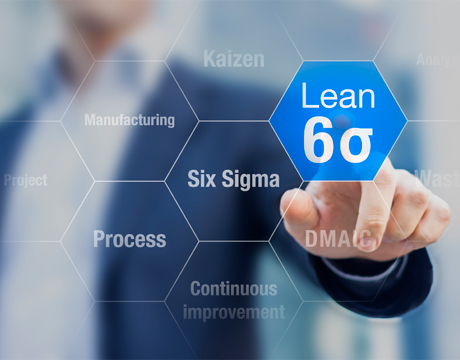5 Lean Principles Every Engineer Should Know
5 Lean Principles Every Engineer Should Know


This story was updated on 10/5/2022.
Unless an engineer is directly involved in manufacturing, they may only be slightly familiar with “lean” principles. Long considered a way to greatly improve manufacturing efficiency, lean can be applied to any business or production process, in any industry.
For example, lean is now being used extensively in the healthcare industry to improve efficiency and reduce costs. The principles can even be used on a smaller scale—to organize your office, workspace, or laboratory, for example.
Lean was originally created by Toyota to eliminate waste and inefficiency in its manufacturing operations. The process became so successful that it has been embraced in manufacturing sectors around the world. For an American company, being lean is critical for competing against lower-cost countries.
The goal of lean is to eliminate waste—the non-value-added components in any process. Unless a process has gone through lean multiple times, it contains some element of waste. When done correctly, lean can create huge improvements in efficiency, cycle time, productivity, material costs, and scrap, leading to lower costs and improved competitiveness.
Lean isn’t just restricted to manufacturing. It can improve how a team works together, manages inventory, and even interacts with clients.
Five Key Lean Principles Every Engineer Should Know
The Lean Enterprise Institute (LEI), founded by James P. Womack and Daniel T. Jones in 1997, is considered the go-to resource for lean wisdom, training, and seminars.
According to Womack and Jones, there are five key lean principles: value, value stream, flow, pull, and perfection.
1. Value
Value is always defined by the customer’s needs for a specific product. For example:
- What is the timeline for manufacturing and delivery?
- What is the price point?
- What are other important requirements or expectations that must be met?
This information is vital for defining value.
2. Value stream
Once the value (end goal) has been determined, the next step is mapping the “value stream.” This includes all the steps and processes involved in taking a specific product from raw materials and delivering the final product to the customer.
Value-stream mapping is a simple but eye-opening experience that identifies all the actions that take a product or service through any process—design, production, procurement, HR, administration, delivery, or customer service. The idea is to draw a "map" of the flow of material/product through the process, with a goal of identifying every step that does not create value and then finding ways to eliminate those wasteful steps.
Value-stream mapping is sometimes referred to as process re-engineering. Ultimately, this exercise also results in a better understanding of the entire business operation.
3. Flow
After the waste has been removed from the value stream, the next step is to be sure the remaining steps flow smoothly with no interruptions, delays, or bottlenecks. In the words of LEI: “Make the value-creating steps occur in tight sequence so that the product or service will flow smoothly toward the customer.”
This may require breaking down silo thinking and making the effort to become cross-functional across all departments, which can be one of the greatest challenges for lean programs to overcome.
However, studies show that this will also lead to huge gains in productivity and efficiency—sometimes as high as 50% improvement or more.
4. Pull
With improved flow, time to market (or time to customer) can be dramatically improved. This makes it much easier to deliver products as needed, as it means the customer can “pull” the product from you as needed (often in weeks, instead of months).
As a result, products don’t need to be built in advance or materials stockpiled. This reduces the need for an expensive inventory that needs to be managed, saving money for both the manufacturer/provider and the customer.
5. Perfection
Accomplishing steps 1-4 is a great start, but the fifth step is perhaps the most important: making lean thinking and process improvement part of your corporate culture. Every employee should be involved in implementing lean.
As gains continue to pile up, it is important to remember that lean is not a static system and requires constant effort and vigilance to perfect. Lean experts often say that a process is not truly lean until it has been through value-stream mapping at least half a dozen times.
Making It Last
Lean can be infectious. Customers will notice big improvements as you implement lean, and will likely want to be part of your process. This collaborative thinking will also extend to your suppliers as well, who will want to use lean themselves to generate their own improvements.
"The core idea behind lean is maximizing customer value while minimizing waste," states LEI. "Simply put, lean means creating more value for customers with fewer resources."
A lean organization understands customer value and focuses its key processes on continuous improvements. The ultimate goal is to provide perfect value to the customer through a perfect value creation process that has zero waste.
As stated by LEI: "Lean accomplishes this by changing the focus of management from optimizing separate technologies, assets, and vertical departments to optimizing the flow of products and services through entire value streams that flow horizontally across technologies, assets, and departments to customers."
Mark Crawford is an independent writer.
The latest engineering courses, now 25% off
As a leading developer of educational resources for engineers, ASME offers a wide range of courses designed to help engineers develop both theoretical knowledge and applicable skills.
With hundreds of relevant courses to choose from, ASME’s accredited, skill-based learning solutions support the success of your employees and your business.
For a limited time, get 25% off our on demand courses when you buy for a group of 5 or more. Use code 5FOR25 at checkout to train on:
When you’re ready to get started, you can browse our full course catalog here. And if you find that you have further questions about ASME’s learning options, don’t hesitate to get in touch.
You May Also Like:
- What is the Skills-First Economy & Why Does it Matter?
- How We Should Design Learning Experiences at Work
- Three Reasons Why Mechanical Engineers Should Seek Out Applied Learning Experiences
- The Latest ASME Skill-Building Learning Solutions
- Engineers are Using Self-Directed Learning to Take Control of Their Careers




